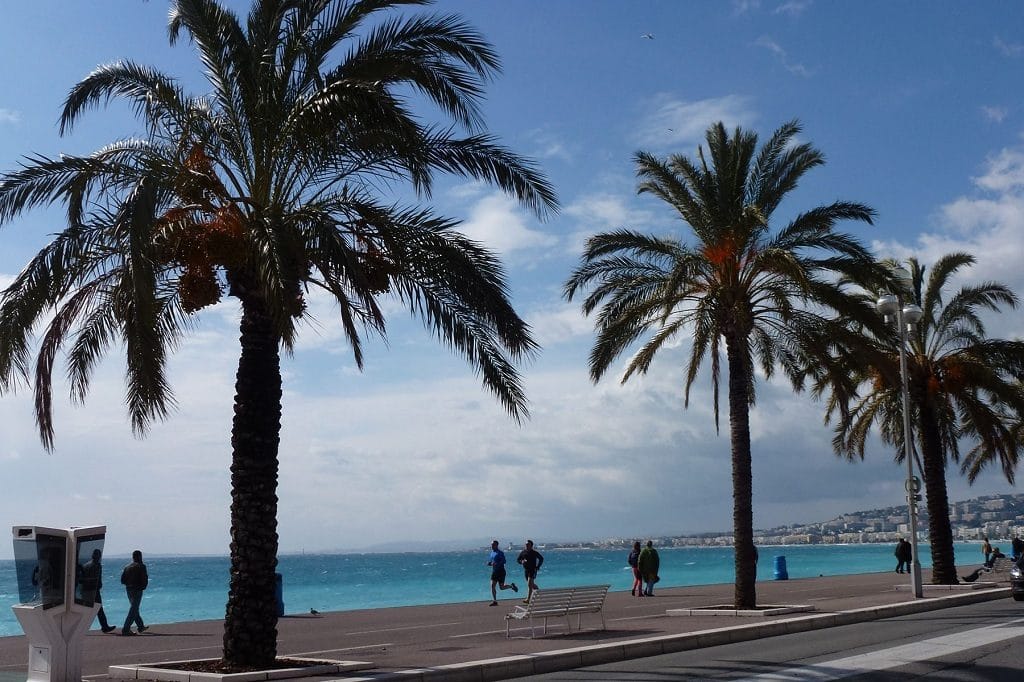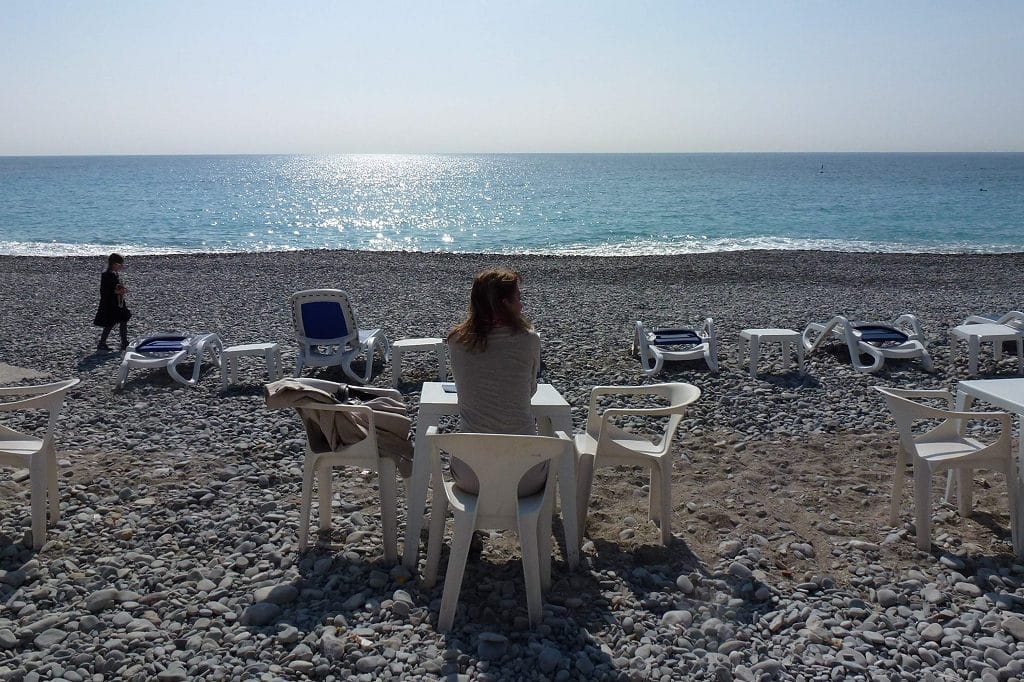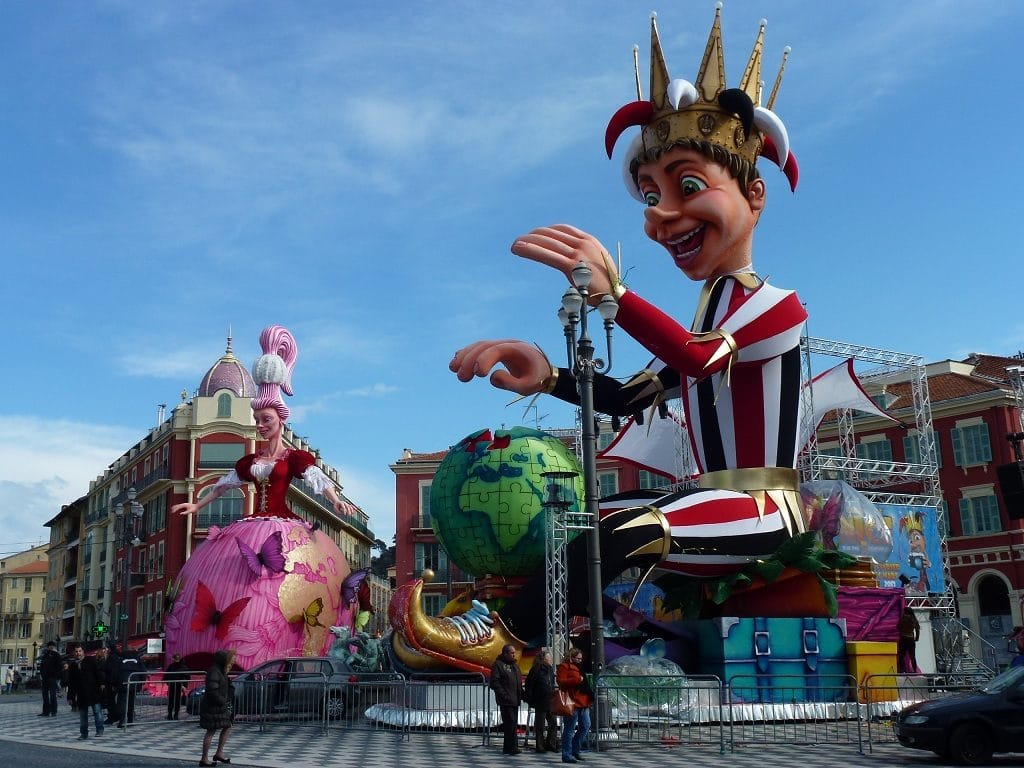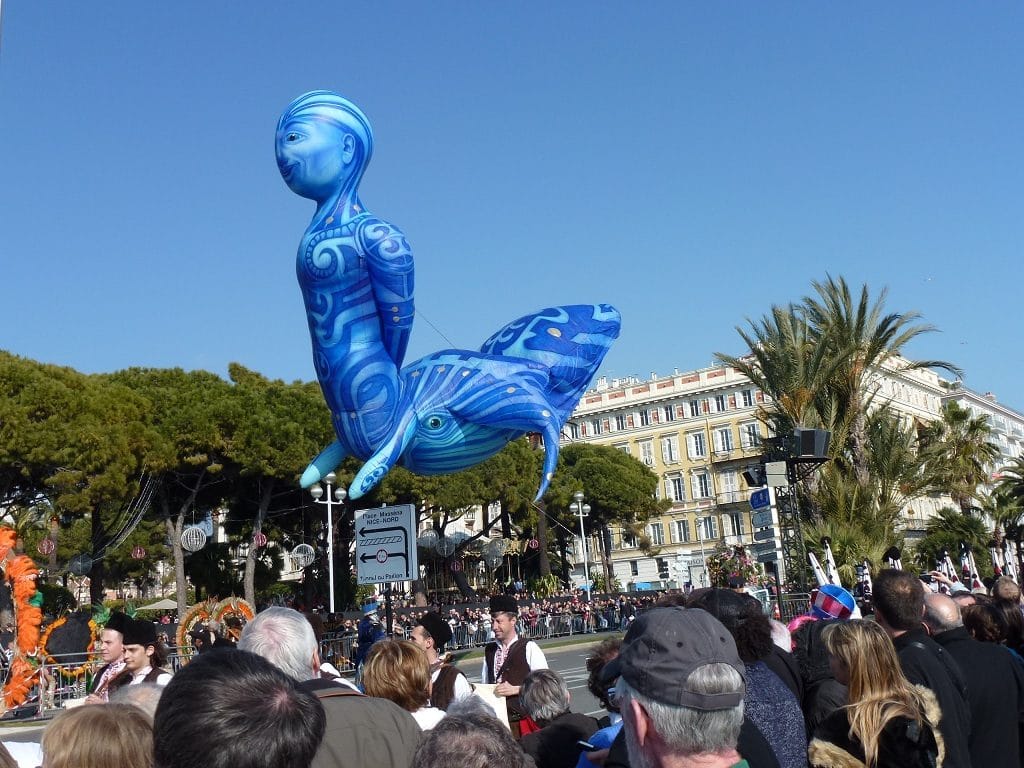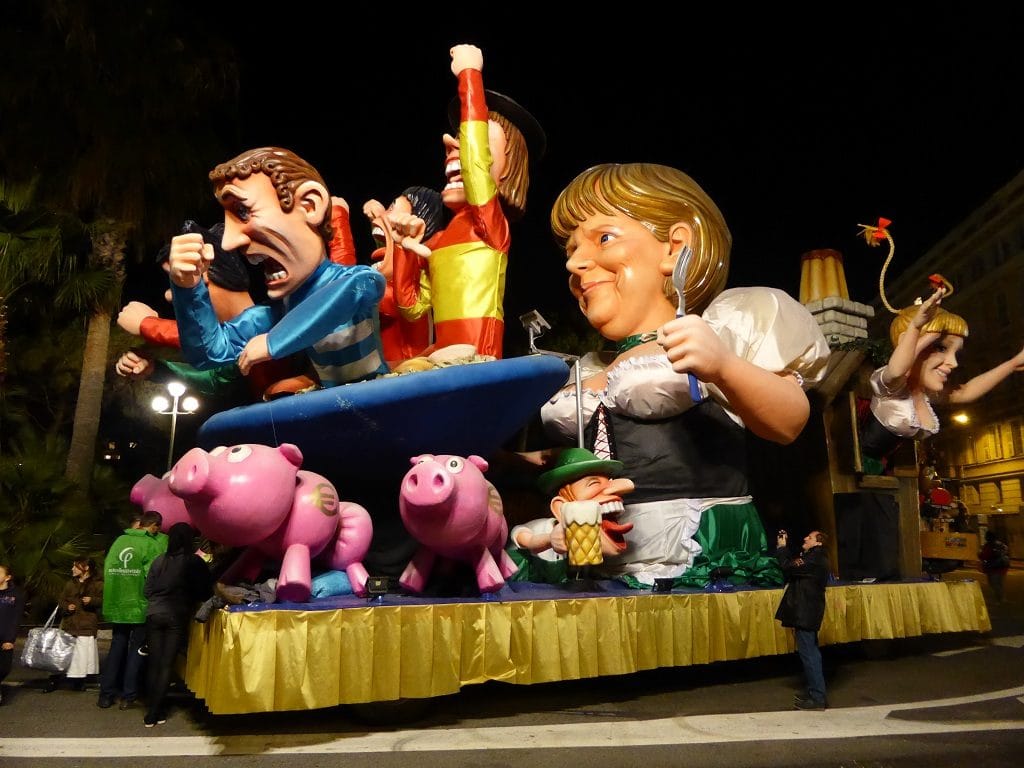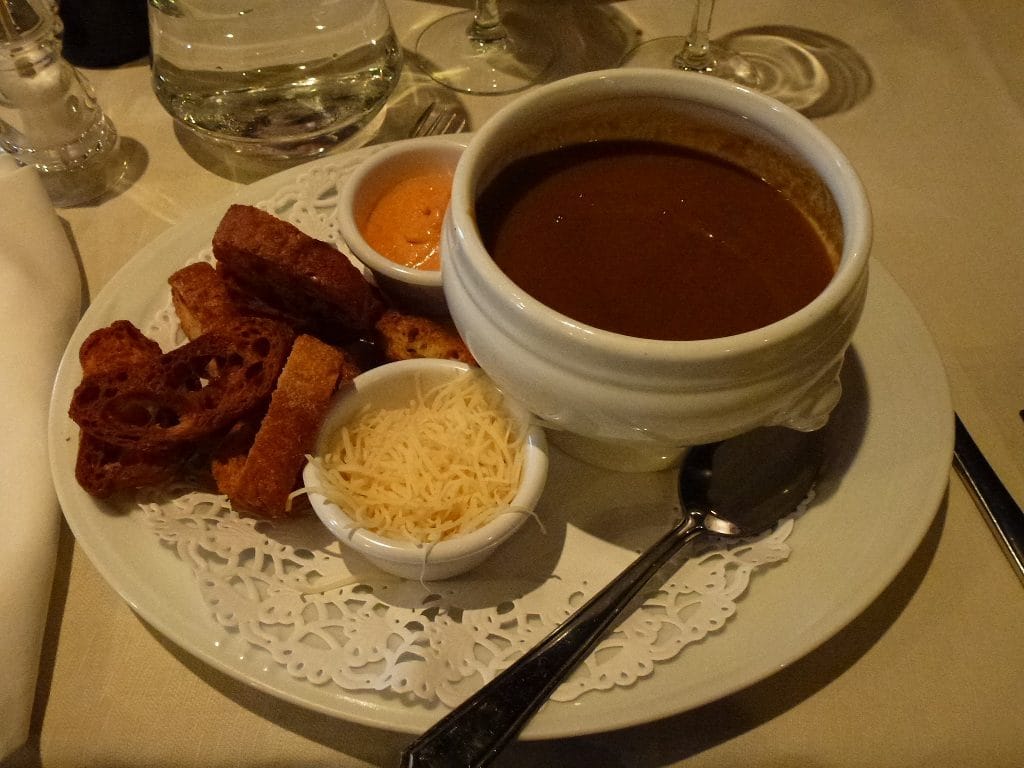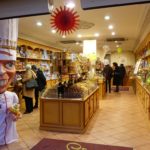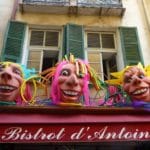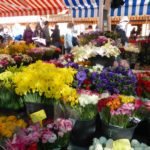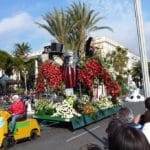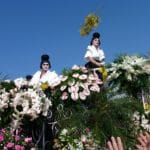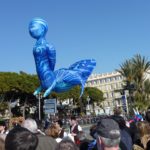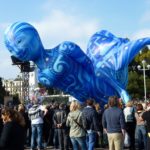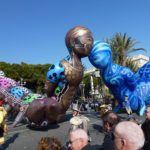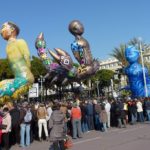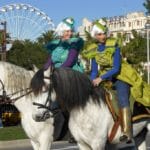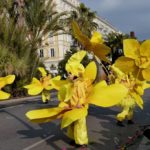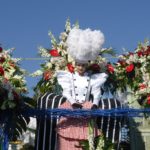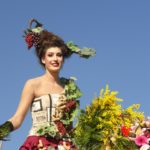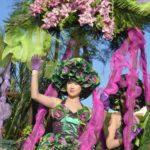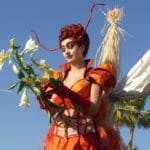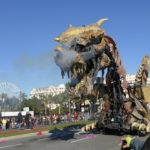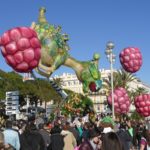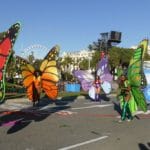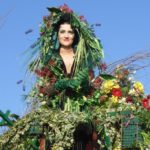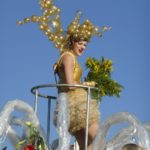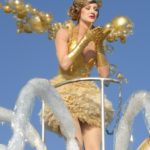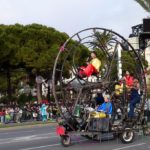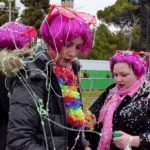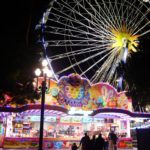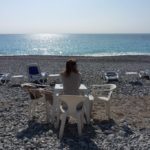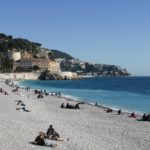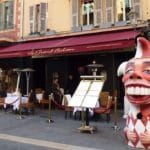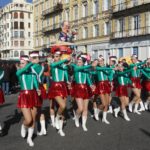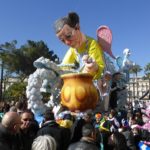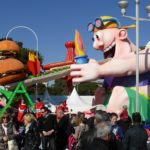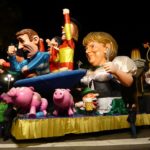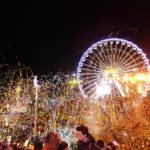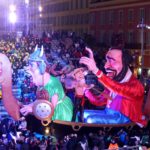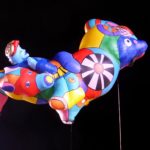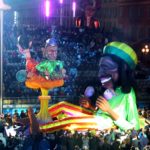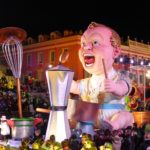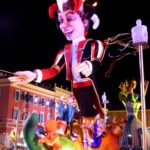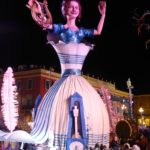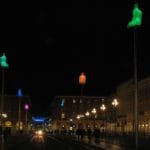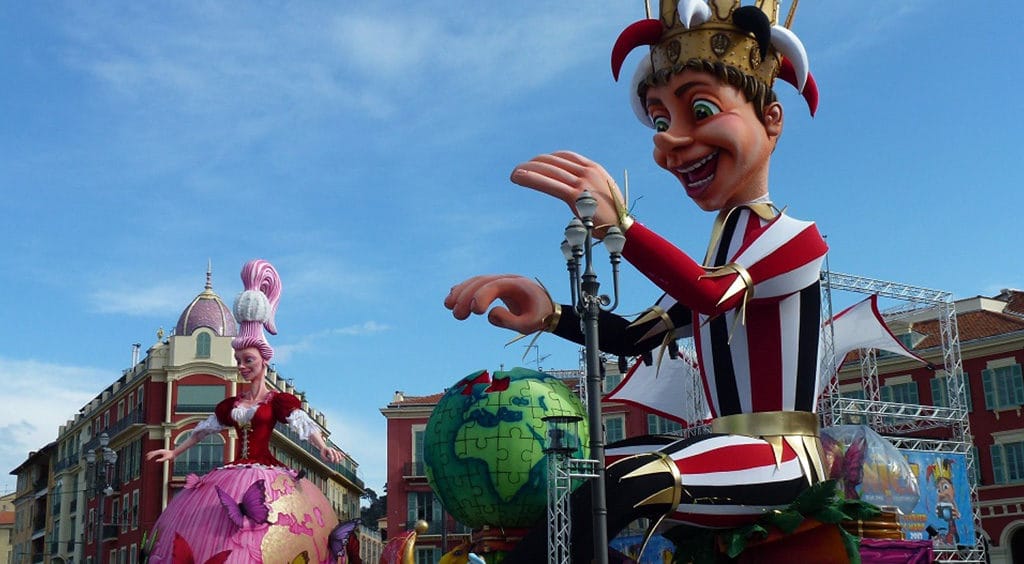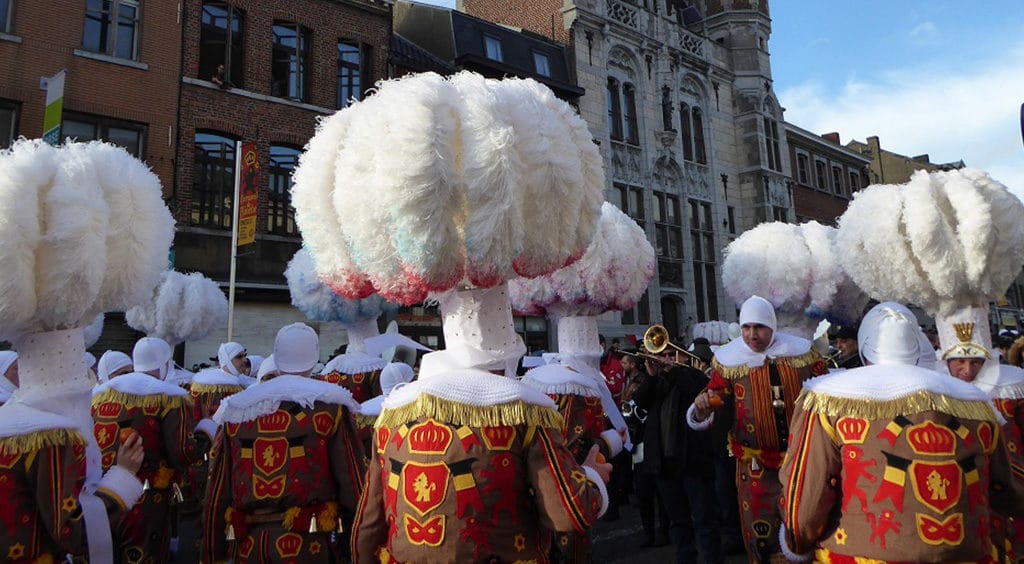If you want to see a day and night carnival parades, Corso Carnavalesque, you can either buy tickets for the tribune or watch it standing alongside the road.
In the evening, the streets are congested. The procession starts at 9 pm, but if you want to catch a good spot, you should be there already at eight. The locals are easy-going and have fun; tourists take it more seriously, sometimes they are in crazy masks, especially drunk Englishmen. Children with silly string spray everybody and everything and they throw confetti in such a quantity that there is no escape. Small papers get everywhere, when I undressed that night, at least one kilo spilled out on the carpet. (I wouldn’t like to hear the cleaning lady’s commentary on the next day.)
At 9 pm, allegorical floats, already standing around the garden Jardin Albert 1er, start moving. They are huge masterpieces, on which hundreds of enthusiasts worked for months. The figurines on the carriages can be twenty-meter high; they are from a traditional papier mâché and have movable limbs. The artist-craftsmen from the ateliers "Maison du Carnaval", "Carnival House", designed them a year in advance and then created them, piece after piece. Every workshop try to make something original. The result is so highly sophisticated that if you do not have a booklet with explanation, you can’t understand it.
To give you an idea: when the theme was the King of Sports, the car ,,Deal with the Devil” represented those who were willing to sell their soul to Lucifer for a medal. The big Satan with the luminous eyes was slowly turning his head to the right and to the left, the dishonest athlete was boiling in the cauldron and the little devils flew around.
I remember a float with the sheik who was smiling maliciously holding a fish hook with a jerry can; there were cars around it with people of different nationalities, all praying to the gasoline.
"Protection of the French language" was a long tongue; standing on it was the Superman and people with a dictionary in one hand and a sword in the other one. The man with the big red nose embodied the "Dictatorship of the Sommelier", because he could destroy or beef up a career of any wine producer by one judgement. The "Return of Gargantua" was impersonated by Gerard Depardieu, carrying on the hand a small Putin who fed him with caviar. Well, the symbolism was clear, the actor moved to Moscow to protest high taxes. Genetically modified vegetables - carrots, onions and a murderously angry pea, but also a scientist with maniac spark in his eyes, trying to create new animals, illustrated the ”Food of the future”. The French have not forgotten the beloved comedian Coluche who died in the accident and today cooks somewhere up in the clouds...
Of course, the parade can’t take place without the politicians, and particularly without Angela Merkel. She prepares ,,the cabbage soup" for the whole of Europe, although not everybody likes it. For sure she didn’t feel offended, as they made her a sexy youngster in Tirol's costume.
Behind her the then French President François Hollande followed, sitting on a pile of smelly cheeses with names ,,Deficit", ,,Unemployment" and ,,Crisis ". Such ,,trivialities” weren't a problem for him, he was smiling peacefully. Putin was present too.

